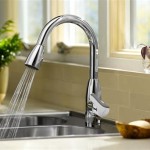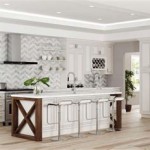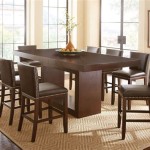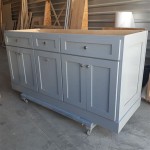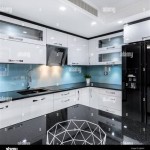Built-In Tables in Kitchens: Exploring Functionality and Design Integration
Built-in tables in kitchens represent a sophisticated design element, seamlessly integrating dining and food preparation spaces. They offer a practical solution for maximizing limited square footage and creating a cohesive, unified aesthetic. Unlike freestanding tables, built-in options are permanently affixed to the kitchen structure, providing enhanced stability and often incorporating additional storage or counter space. This design choice demands careful planning and consideration of various factors, from material selection to spatial layout, to ensure optimal functionality and visual appeal.
The allure of a built-in table extends beyond mere space-saving benefits. It creates a focal point within the kitchen, fostering a sense of intimacy and encouraging interaction during meal preparation. Furthermore, built-in tables can be customized to reflect the homeowner’s personal style and complement the existing kitchen design. This adaptability allows for a truly personalized and functional kitchen environment.
Optimizing Space and Functionality
One of the primary advantages of incorporating a built-in table into a kitchen design is its ability to optimize space utilization. In smaller kitchens, a conventional dining table can easily overwhelm the available area, hindering movement and creating a cramped atmosphere. A built-in table, however, can be strategically positioned to minimize its footprint while still providing adequate seating for meals and other activities. This is particularly valuable in apartment living or homes with limited dining room space.
Beyond space optimization, built-in tables enhance functionality by blurring the lines between food preparation and dining areas. A strategically placed built-in table can serve as an extension of the countertop, providing additional workspace for preparing meals. This is particularly useful when multiple individuals are involved in the cooking process or when hosting gatherings. The proximity of the table to the cooking area also facilitates easy serving and cleanup.
Furthermore, built-in tables can incorporate integrated storage solutions. Drawers, cabinets, or shelves can be integrated into the table’s design, providing convenient storage for kitchen essentials such as placemats, napkins, cutlery, or even cookbooks. This integrated storage further contributes to a clutter-free and organized kitchen environment. Considering the spatial constraints and storage requirements is crucial when designing a built-in table.
Design Considerations and Material Selection
The design of a built-in table should seamlessly integrate with the overall aesthetic of the kitchen. This requires careful consideration of the table’s shape, size, and style. The table’s shape, whether rectangular, square, round, or oval, should complement the existing architectural lines of the kitchen. The size should be proportional to the available space and adequately accommodate the intended number of users.
The style of the built-in table should also align with the overarching design theme of the kitchen, be it modern, traditional, rustic, or contemporary. For example, a sleek, minimalist kitchen may benefit from a built-in table with clean lines and a simple design. Conversely, a traditional kitchen might feature a built-in table with ornate details and a more elaborate design. Exploring various design styles and incorporating elements that resonate with the homeowner's preferences is essential.
Material selection is paramount in determining the durability, aesthetics, and maintenance requirements of a built-in table. Common material choices include wood, stone, laminate, and metal. Wood offers a warm and inviting aesthetic, lending a natural and rustic feel to the kitchen. Stone, such as granite or marble, provides a luxurious and durable surface, resistant to scratches and heat. Laminate offers a cost-effective alternative to wood or stone, providing a wide range of colors and patterns. Metal, such as stainless steel or wrought iron, can impart a modern and industrial aesthetic.
The choice of material should consider the anticipated usage of the table and the desired level of maintenance. For instance, a table used frequently for food preparation may benefit from a durable and stain-resistant surface, such as granite or laminate. The color and finish of the chosen material should also complement the existing kitchen cabinetry and countertops. Careful consideration of these factors will ensure that the built-in table seamlessly integrates with the overall kitchen design.
Structural Integration and Installation
Unlike freestanding tables, built-in tables require careful structural integration to ensure stability and longevity. They are typically anchored to the existing kitchen cabinetry, walls, or flooring. The anchoring method depends on the table’s design, weight, and the surrounding structural elements. Before initiating the installation process, it is crucial to assess the structural integrity of the anchoring points and ensure that they can adequately support the table’s weight.
The installation process typically involves securing the table’s frame or support structure to the designated anchoring points. This may involve using screws, bolts, or adhesives to create a secure and stable connection. In some cases, it may be necessary to reinforce the anchoring points with additional support beams or brackets. It is advisable to engage a qualified contractor or carpenter to oversee the installation process, ensuring that the table is properly installed and structurally sound.
Furthermore, integrating electrical outlets or plumbing fixtures into the built-in table requires careful planning and execution. Electrical outlets can be conveniently incorporated into the table’s surface to provide power for appliances or electronic devices. Plumbing fixtures, such as a small sink or faucet, can be integrated into the table’s design to create a small wet bar or food preparation station. These integrations require careful planning to ensure compliance with relevant building codes and safety regulations.
Accurate measurements and precise execution are vital for a successful installation. Any discrepancies in measurements or improper anchoring can compromise the table’s stability and lead to structural issues in the long run. Therefore, thorough planning, precise execution, and adherence to building codes are critical for ensuring the longevity and functionality of a built-in table.
The ergonomic considerations related to seating height and table depth are also crucial during the installation phase. The table height should be comfortable for individuals of varying heights to sit and dine. The depth of the table should provide ample space for plates, utensils, and other dining essentials. Failing to address these ergonomic factors can lead to discomfort and inconvenience for users.
Ultimately, the successful integration of a built-in table into a kitchen requires a collaborative effort between the homeowner, designer, and installer. By carefully considering the space constraints, design preferences, and structural requirements, it is possible to create a functional and aesthetically pleasing addition to the kitchen that enhances both its utility and visual appeal.
Properly executed, a built-in kitchen table becomes more than just a place to eat; it's a central hub for family interaction and a testament to thoughtful design.

Why The Built In Banquette Is Becoming A Designer Favorite New York Times

Design Detail A Dining Table Is Hidden Within This Kitchen

Kitchen Island Table Ideas And Options Hgtv Pictures

9 Ways To Fit A Table Into Cozy Kitchen

Why The Built In Banquette Is Becoming A Designer Favorite New York Times

Kitchen Island Built In Dining Bench Design Ideas

35 Charming Banquette Seating Ideas Kitchen Design

Kitchen Island Built In Dining Bench Design Ideas

Kitchen Islands With Attached Built In Tables Styles Uses Resale Value

Corner Kitchen Table Ideas To Create A Stylish Motif

